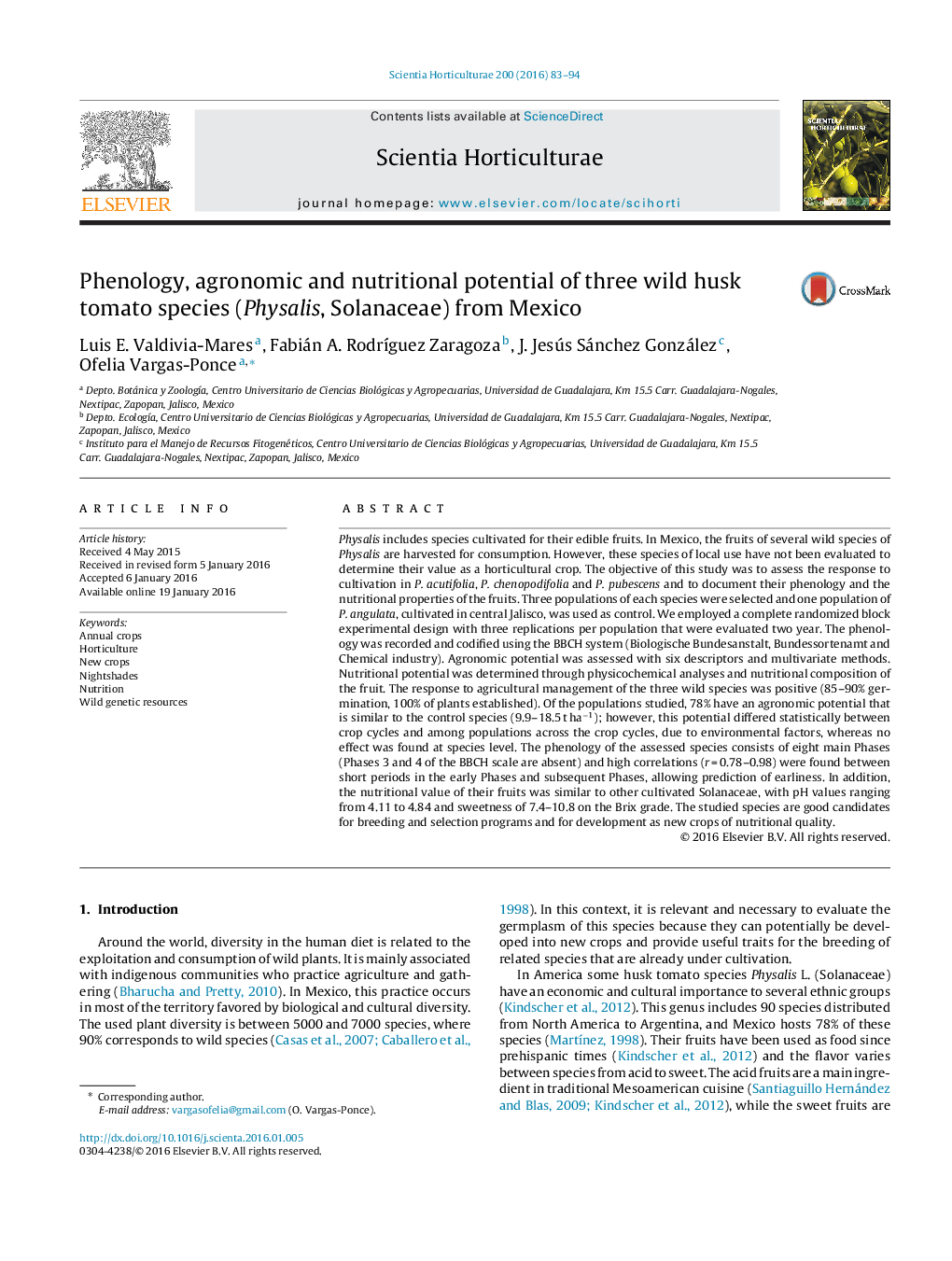| کد مقاله | کد نشریه | سال انتشار | مقاله انگلیسی | نسخه تمام متن |
|---|---|---|---|---|
| 4566061 | 1628798 | 2016 | 12 صفحه PDF | دانلود رایگان |

• We evaluate cultivability, phenology and nutritional value of 3 wild husk tomato species.
• The response to agricultural management of the 3 species was positive.
• The phenology of the assessed species consists of eight main Phases (BBCH scale).
• Nutritional quality of the fruits was similar to other cultivated Solanaceae.
• Husk tomato species are good candidates for development as new crops.
Physalis includes species cultivated for their edible fruits. In Mexico, the fruits of several wild species of Physalis are harvested for consumption. However, these species of local use have not been evaluated to determine their value as a horticultural crop. The objective of this study was to assess the response to cultivation in P. acutifolia, P. chenopodifolia and P. pubescens and to document their phenology and the nutritional properties of the fruits. Three populations of each species were selected and one population of P. angulata, cultivated in central Jalisco, was used as control. We employed a complete randomized block experimental design with three replications per population that were evaluated two year. The phenology was recorded and codified using the BBCH system (Biologische Bundesanstalt, Bundessortenamt and Chemical industry). Agronomic potential was assessed with six descriptors and multivariate methods. Nutritional potential was determined through physicochemical analyses and nutritional composition of the fruit. The response to agricultural management of the three wild species was positive (85–90% germination, 100% of plants established). Of the populations studied, 78% have an agronomic potential that is similar to the control species (9.9–18.5 t ha−1); however, this potential differed statistically between crop cycles and among populations across the crop cycles, due to environmental factors, whereas no effect was found at species level. The phenology of the assessed species consists of eight main Phases (Phases 3 and 4 of the BBCH scale are absent) and high correlations (r = 0.78–0.98) were found between short periods in the early Phases and subsequent Phases, allowing prediction of earliness. In addition, the nutritional value of their fruits was similar to other cultivated Solanaceae, with pH values ranging from 4.11 to 4.84 and sweetness of 7.4–10.8 on the Brix grade. The studied species are good candidates for breeding and selection programs and for development as new crops of nutritional quality.
Journal: Scientia Horticulturae - Volume 200, 8 March 2016, Pages 83–94